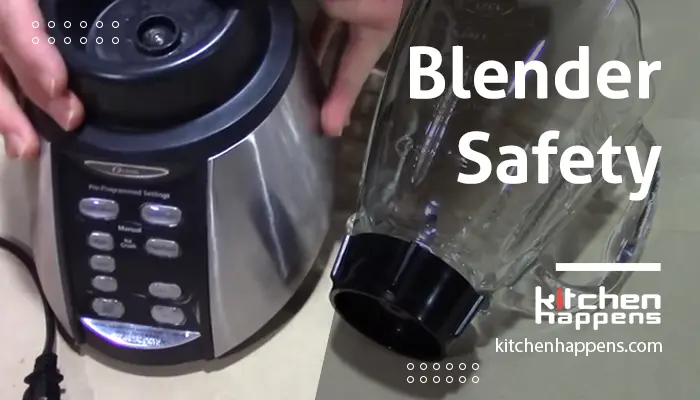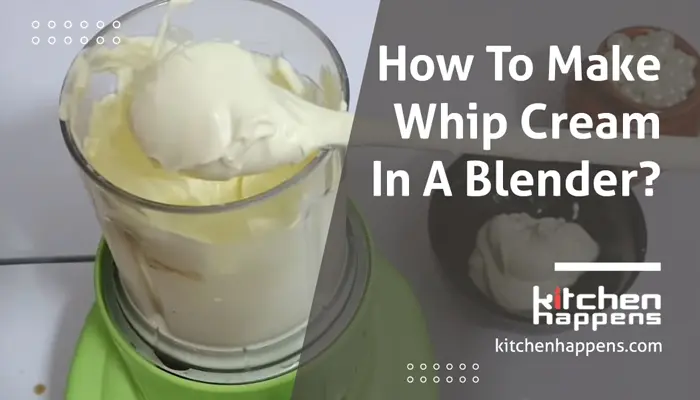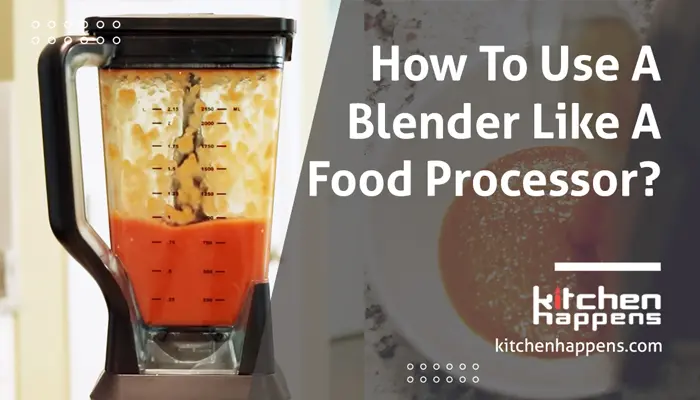A blender is one of the most important parts of a kitchen. From shakes to purees and sauces, these machines can be used to prepare a wide range of dishes.
However, in the case of motorized kitchen appliances with blades, proper care, and use are required to prevent any safety hazards. If you want to use a blender safely, there are some basic precautions and rules you should follow. This will keep you safe while the blender does what it should do-blend.
As a result, today we will be sharing some important blender safety tips that can help you keep yourself away from any risks that you may encounter when using blenders. Let’s get started and stick with me through the end.
Safety Precautions When Using A Blender
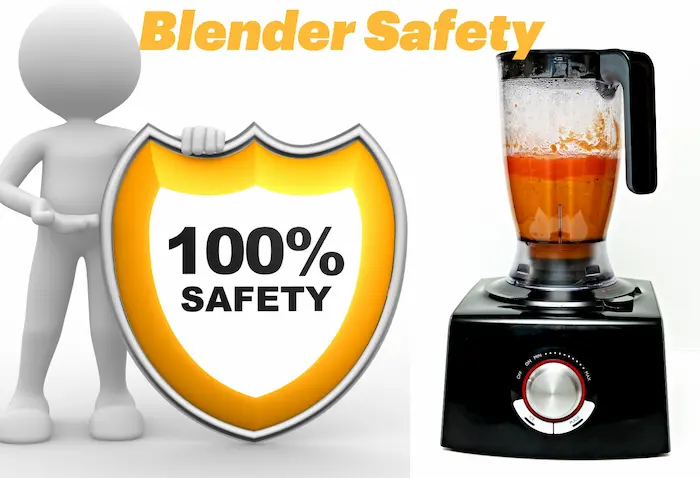
There are some general blender safety precautions you should follow when you are using a blender. We will now go through these blender safety features step by step so you can get a better understanding of them.
Make Sure You Read The Manual
There are a number of kitchen appliance errors that occur because the owner failed to read the specific instructions accompanying the manual. You owe it to yourself to read the manual when it involves blades, high speed, and the possibility of explosion.
- You need to check the required wattage. You will need the right adapter to safely transform it if the wattage differs from your house wattage.
- Check your blender’s blades for specifics. Make sure you understand how they work and if they have any safety mechanisms.
- Find out what your blender is capable of and its weaknesses. The instructions will provide you with information relevant to your model.
Only Let Responsible People Use The Blender
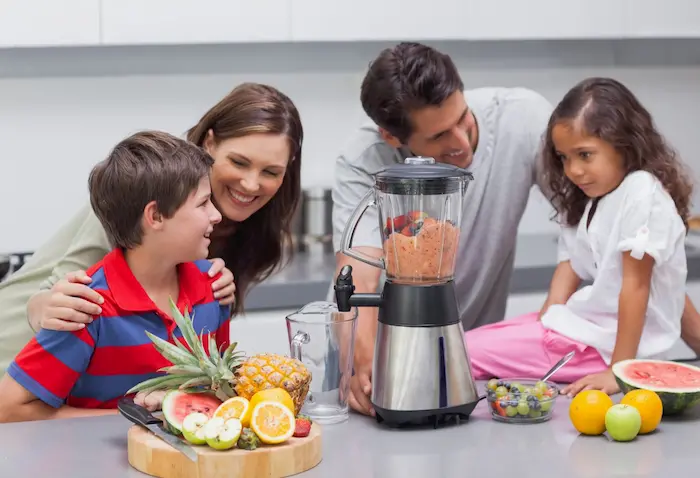
Children should not operate a blender until they are responsible enough to know how to use it safely. As part of this, you will have to directly show and teach the child how to use the blender properly as well as explain the safety issues.
Children should not use blenders without supervision. You should never let children use a blender alone; always have someone supervising them while they use it.
Know What Cannot Be Blended
In some cases, certain foods should not be blended because they could damage the blender blades. It is never a good idea to blend the following foods:
Hard spices: Hard foods include black peppercorns, nutmeg, and cinnamon sticks. You may experience breathing difficulties and stinging eyes if you are exposed to pepper dust. It is possible to damage or break the blades with the other two spices when they are whole. You can also use a mortar and pestle or a spice grinder instead. When blending drinks or foods, you can add ground spices.
Coffee beans: Blenders are not designed to grind coffee beans, which is the method required. A blender can be used to make milkshakes, etc. after ground coffee has been added.
Mashed potatoes: A blender will not be able to handle the thick consistency of the potatoes and will make a mess instead of a mash.
Rock hard frozen foods: It is not recommended to use ice, hard frozen fruits, berries, or vegetables since they will damage the blades and may cause small missiles to shoot out. Using only frozen food in the blender can also result in “cavitation”, an air pocket that prevents the blades from cutting properly. Let ice cubes soften just a little before blending frozen foods.
Ginger: It is best to chop or grind ginger by hand or with a mortar and pestle.
Boiling hot liquid: It is never a good idea to put hot liquids such in a jar, such as soup or drinks. It is always a good idea to allow it to cool a little before use.
Cut Food to Fit The Blender Jar
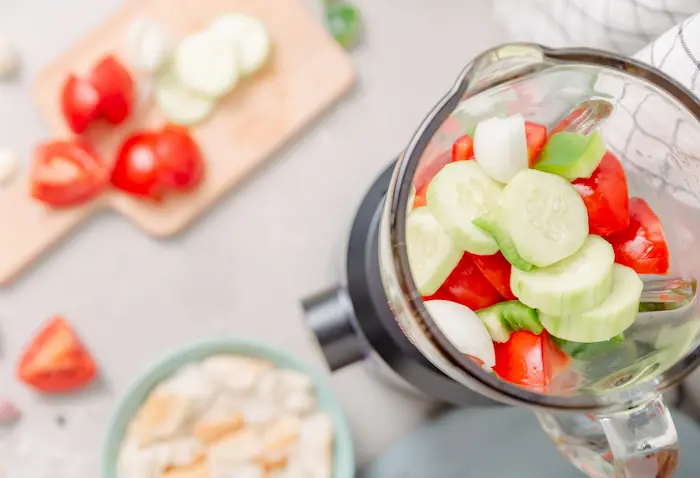
Keep the food within the jar and do not allow it to stick out past the top. You should instead cut the fresh food so that it fits into half the height of the jar.
General Safety When Using a Blender
Now let’s know some of the general blender safety when using a blender at home.
Keep Fingers And Hands Away From Blenders
You should avoid putting your hands or fingers into the blender whenever it is set up for use. You can easily cut your skin, muscles, and bones with these blades because they are very sharp.
- You should never put your fingers or hands into a blender that is running, no matter what speed it is.
- When the blender is plugged into the wall, never put your fingers or hands into it. There is a high possibility of severe injury if the start button is bumped or knocked.
When Blending, Avoid Dangling Clothing or Jewelry
There are many items that could get caught on the blades, such as necklaces, bracelets, long earrings, ties, scarves, etc. It is also possible to get caught if you have long or loose hair or braids that are dangled in, such as ponytails, braids, etc. Ensure your hair is pinned back and any dangling jewelry or clothes are removed.
During Use, Don’t Add Anything to The Blender
If you add liquid or food to a blender, it might fly everywhere. Start by turning off the blender, adding the items, and then continuing to blend.
- When stirring with spoons, spatulas, or any other stirring item, the blades could splinter or stop, causing the motor to overheat and break.
Don’t Blend For Too Long
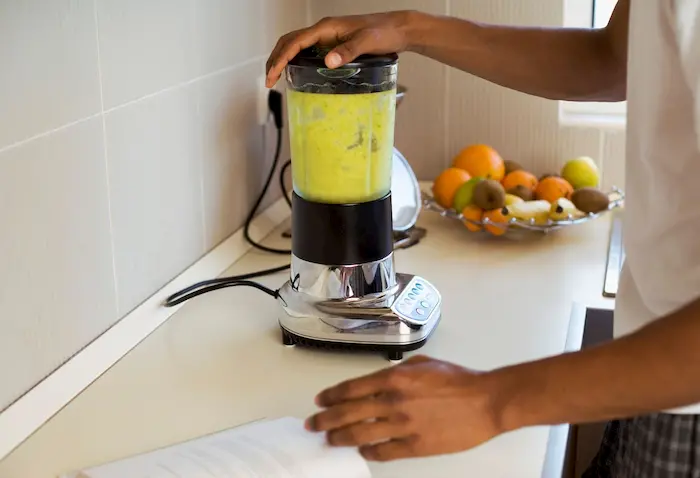
A blender without an automatic cut-off switch, such as a cheaper model or an older model, may be unable to do this. Blenders are designed for short-term use, not long-term use. Whenever you need to blend a lot, give the blender a break between short bursts.
- If you smell smoke or see the engine burning, you have overworked it. Stop right away! Check the motor before using it again. It may be damaged.
Take Off The Lid of Any Blended Food Without Removing The Blender Jar
Using these blender safety features prevents you from accidentally starting the blender. Moreover, it prevents food from accidentally slipping into the motor of the blender, which could damage it.
Safety Tips When Blending Hot Food
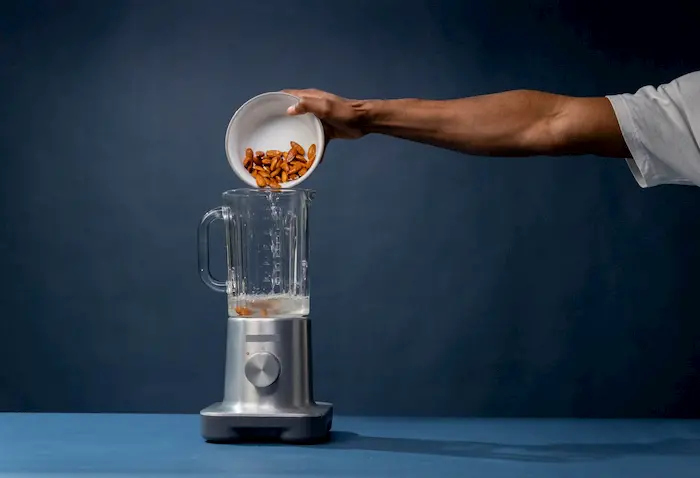
- Allow the food to cool slightly. You can make all the difference between a food explosion and a fuss-free blend by waiting 5 minutes or so.
- It is recommended to fill the blender no more than halfway. When blending foods and liquids, one-third to half is ideal, especially if they are warm.
- Remove the center section of the blender lid. It is also known as the blender cap or stopper. In the absence of this, lift one corner of your blender’s lid. You should note that it is the creation of a vacuum that leads to hot explosive liquids or hot food problems in blenders.
- Put the lid back on. In this case, we won’t be using the feeder cap. You should double-check that it is securely attached.
- Cover the blender lid with a clean kitchen tea towel. Fold it thickly before adding it to the blender lid so that it completely covers it.
- Make sure the lid remains securely in place by holding onto it. Blend only at the lowest speed possible. You can gradually increase this speed as you blend and see everything stays safe.
Safety Tips When Blending Hard Foods
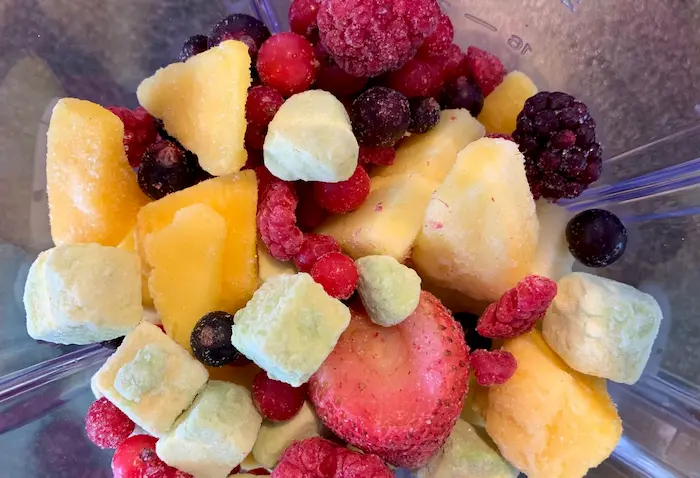
1. Prepare frozen or hard foods appropriately. As much as possible, cut or break the hard foods by hand (using a knife, rolling pin, etc.). Let frozen foods thaw halfway before blending. Soften ice cubes a little first. Using this method will prevent the blender from being damaged by the foods.
2. Balance liquids and hard or frozen foods. The liquid must always be present when blending harder foods; it ensures that the hard or frozen foods don’t grind against the blades.
3. Put hard foods last. If you are blending soft foods with hard foods, add the hard food last. Before adding hard or semi-frozen foods, add liquids, creams, custards, and fresh (non-hard) vegetables, fruits, and berries. Never fill more than halfway.
4. Use a commercial blender if you frequently blend hard frozen ice or frozen food. It’s only a commercial blender that can handle such hard foods safely without damaging the blades. You could also use an extremely expensive, high-end consumer blender with a powerful motor (1000 watts). It is best to let ice cubes soften a little before using an ordinary blender. If used often with hard ice cubes, the blades will wear out quickly.
- A cheap blender is unlikely to be able to handle frequent blending of such foods as nuts, raw carrots, and raw broccoli. It’s usually fine to blend cooked or semi-cooked vegetables. If the nuts are crushed first, a cheap blender will probably work––the smaller the item is, the easier it will be to blend.
- Read your blender’s instructions carefully. You can probably crush ice or frozen foods if it says that clearly in the manual, but find out how frequently the manufacturer recommends doing this (contact them if the manual does not clarify). In the event that the manual warns against this or fails to mention it, don’t use the blender for frozen or hard foods.
Storing Blender Safely
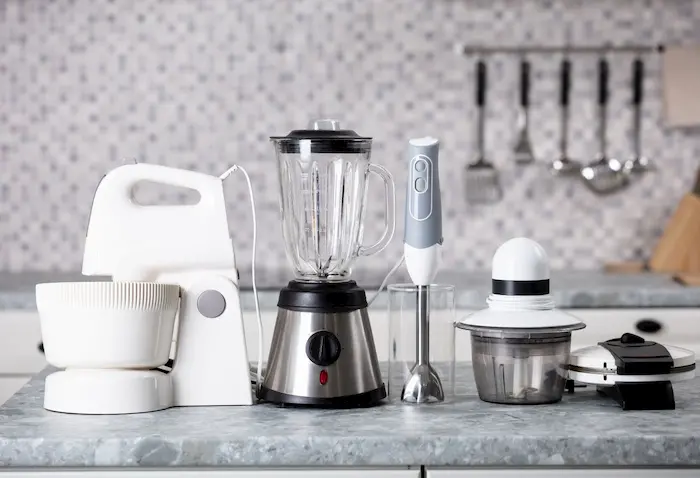
It’s important to store your blender properly. When it comes to storing blenders, there are a few things to remember:
- If you are not using the blender, unplug it. A blender does not need to be permanently plugged into an electrical outlet.
- Clean the blender regularly. Keeping it clean can prevent mold from growing, bacteria from growing, and rust from forming on the blades. Your food isn’t particularly safe or healthy if bacteria, mold, or rust are transferred to it. Use warm water and gentle dish soap to clean after each use. Do not wet the engine (base) or immerse it in water.
- Make sure the blender is kept in a safe place. Put it in a position that won’t allow the blender to fall off a bench or shelf. When storing, separate the blender parts if this is more durable and safer.
Therefore you need to care for your blender regularly with proper guidelines to prevent blender safety hazards.
Final Thoughts
Finally, you learned how to use a blender safely with blender safety tips. Carefully using a blender can make it very easy to use. We have mentioned several tricks that you can use to make sure you follow all the instructions of your manufacturer. It is always a good idea to supervise children when using blenders. Store it safely and clean it with care. You should also avoid blending any hard solids in a home blender. When blending solid foods, make sure you add plenty of liquid. It will prevent the hard solids from grating away at the blades. As a result, the blades become dull and overheat. Meanwhile, learn what you should not put in a blender.
Frequently Asked Questions
Will A Blender Catch On Fire?
It’s possible for a blender to catch fire, especially an older blender or one made without proper quality controls or oversight for foreign components. The older blenders will also have been used more, so they will show a lot of wear and tear.
New blenders offer the following safety features:
- Controlling the temperature too much
- Control over the current situation
- Control of auto-off
- Heating elements with self-regulation
- Anti-tipping mechanisms
New blenders from reputable brands are less likely to catch fire.
Can I Put My Fingers Into My Blender?
Generally, you should not put your fingers into your blender’s mixing blades. Attempting to do this has injured children as well as adults. Despite its difficulties, it is very important to inspect every part of a blender, including its blades. Keep an eye out for where the blades are placed at all times if your blender is automatic or robotic.
What Can You Put In A Blender?
Blenders are perfect for mixing fluids and soft foods, like carrots. This is why blenders are great for making smoothies and shakes. Blenders are perfect for mixing juice with vitamin powders or making protein shakes after a workout.
Can A Person Be Burned Using A Blender?
If a blender’s base overheats, and the user touches it, he or she can be burned. Most modern blenders, however, have plastic casings that stay cool for a long time.

